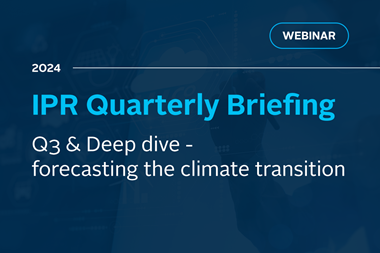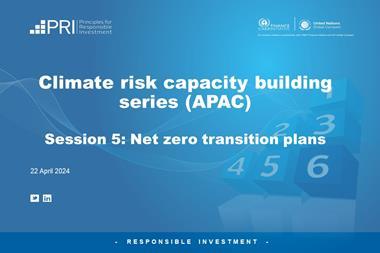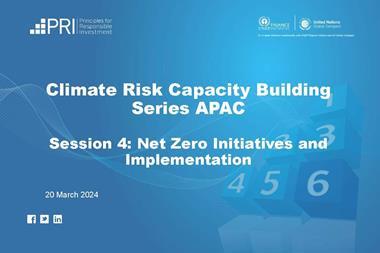Sign the investor statement supporting a just transition on climate change
Responsible investment, a just transition and sustainable development
The critical need for the transition to be both fast and fair is recognised in the Paris Agreement. The evidence shows that the shift to a resilient, low-carbon economy will boost prosperity and be a net driver of job creation. There will be transitional challenges, however, for workers, communities and countries as this shift takes place. To address this, investor strategies to tackle the growing threat of climate change need to incorporate the full range of environmental, social and governance (ESG) dimensions of responsible investment. As fiduciaries, investors can make an important contribution to achieving a just transition, as stewards of assets, allocators of capital, and as influential voices in public policy. There is increasing recognition, however, that investors have so far given insufficient attention to the social consequences of climate change. For investors, the just transition provides the framework for connecting climate action with inclusive growth and sustainable development.
The good news is that investors do not need to reinvent the wheel to address the social dimension of climate change. There are a range of well-tested investor approaches that already exist. This guide draws on an international review of those approaches, and on extensive dialogue with investors, to provide a framework that can be applied both by individual institutions and through collaborative initiatives.
Five motivations for investor action
The case for investor action rests on five strategic motivations. These are aligned with core duties and interests and also show that contributing to the just transition is a way for investors to deliver positive social and environmental impacts.
Broadening the understanding of systemic risks…
…from climate climate change, by factoring in issues such as social exclusion and increasing inequality.
Reinvigorating fiduciary duty…
…by better capturing the interrelated environmental and social drivers of long-term performance and by taking better account of beneficiary interests in sectors and regions affected by the transition.
Recognising material value drivers…
…in terms of corporate practices in the workplace and the broader social licence to operate: business performance will be increasingly conditioned by the just transition.
Uncovering investment opportunities…
…that combine climate and social goals such as inclusive growth, identified through the lens of the just transition.
Contributing to societal goals…
…including existing responsibilities to respect international human rights and labour standards as well as new ways of realising the Sustainable Development Goals.
Five areas for investor action
Based on these motivations, there are five areas for action through which investors can make the just transition part of their core operating practices.
Investment strategy
Assessing exposure to the social dimension (including employment impacts) of the transition, pursuing dialogue with workers and other key stakeholders, and integrating just transition factors into investment beliefs and policies.
Corporate engagement
Including just transition factors in investor expectations, requesting disclosure, benchmarking performance, and pressing for improvement. The guide provides an initial set of questions for corporate engagement.
Capital allocation
Incorporating the social dimension into strategies for climate investment across all asset classes, including listed equities, bonds, private equity and real assets.
Policy advocacy and partnerships
Making the just transition a part of policy dialogue at sub-national, national and international levels as well as within place-based partnerships.
Learning and reviewing
Understanding emerging lessons and disclosing results so that the efficiency and effectiveness of action on the just transition improve.
Where can investors start?
The just transition is a new and emerging agenda for investors. The task for investors is to develop their own plan of action based on the areas outlined in this guide. One way to start this process is to sign an investor statement to support a just transition that has been prepared by the Principles for Responsible Investment (PRI). This can be accessed here.
Another way is to take action on a number of priority next steps to bring the just transition to life. Key next steps include:
- Incorporate the just transition into policy on responsible investment and climate change.
- Integrate the just transition into procurement of investment services across all asset classes.
- Engage with companies to include the just transition within climate strategies, covering critical workplace issues, as well as supply chain management and community relations.
- Participate in place-based initiatives to channel capital into community renewal and regional diversification through investments with positive social and environmental impacts.
- Promote disclosure by companies, asset owners and asset managers using the framework of the Task Force on Climate-related Financial Disclosures (TCFD) and extending this to include the social dimension.
Looking ahead, investing in a just transition is set to be the best way to manage the strategic risks and opportunities that flow from the shift to a prosperous, low-carbon, resilient and inclusive global economy.
Produced in collaboration with
Grantham Research Institute, London School of Economics
Harvard Kennedy School
Downloads
Climate change and the just transition: A guide for investors
PDF, Size 1.29 mbJust Transition Investor Statement - 16 April 2020
PDF, Size 1.53 mbEl cambio climático y la transición justa: Guía para la toma de decisiones de los inversores
PDF, Size 1.26 mbChangement climatique et transition juste: Guide pour orienter l’action des investisseurs
PDF, Size 1.27 mbIl cambiamento climatico e la transizione giusta: Guida per l’investitore
PDF, Size 1.25 mb





















